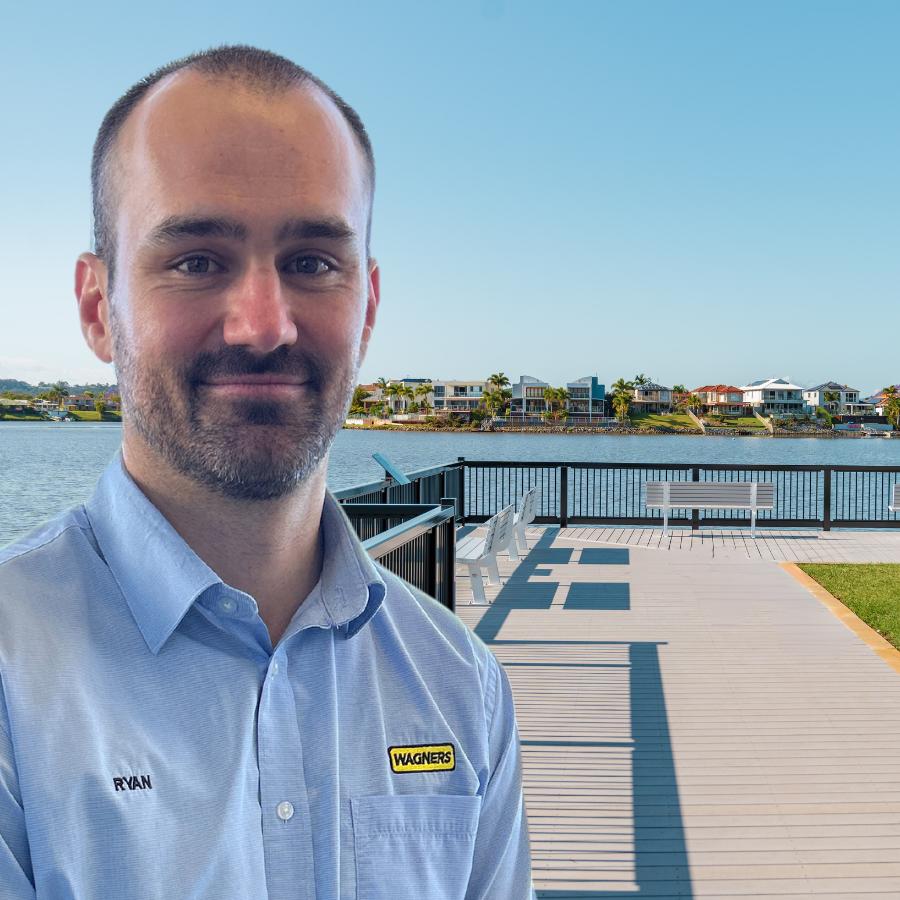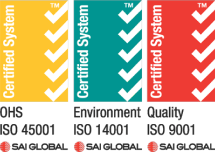As Australia gears up for a new era of sustainable and resilient infrastructure, Fibre-Reinforced Polymer (FRP) composites are emerging as a game-changing material in construction and engineering projects.
That’s according to Wagners Composite Fibre Technologies (CFT) General Manager Australia New Zealand, Ryan Leeson who explained the remarkable properties of FRP and their alignment with the country’s environmental goals, will make composites a top choice for Australian projects in 2025 and beyond.
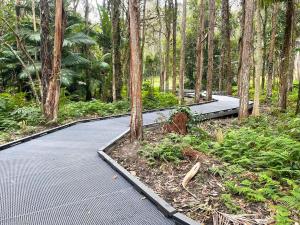
Pictured – Indigiscapes Boardwalk in Redland City Council, Queensland.
What is FRP?
Fibre-Reinforced Polymer (FRP) is a composite material that combines a polymer matrix—such as epoxy, vinyl ester, or polyester—with reinforcing fibres like glass, carbon, or aramid resulting in a lightweight yet incredibly strong material with distinct advantages over traditional construction materials like steel, concrete, and timber.
For more information on the raw materials that go in Wagners CFT profiles watch this webinar on ‘It’s What’s Inside That Counts’.
“Wagners CFT has been manufacturing world-leading FRP structural profiles here in Australia for more than 23 years and has been pivotal in establishing the use of FRP in the electricity industry,” Ryan Leeson said.
“Since 2002 we have manufactured more than 1.8 million cross arms for networks throughout Australia and are now working with these same networks to install FRP utility poles to further enhance network security and reliability; particularly in the face of increased frequency and severity of natural disasters ,” Mr Leeson said.
“But in more recent years we have also seen an uptake in interest and adoption of FRP profiles for a myriad of commercial projects in marine environments and pedestrian infrastructure solutions like boardwalks and pedestrian bridges,” he said.
“And as we enter 2025, the interest and enquiries on the potential use of FRP in industries that have yet to adopt the benefits of FRP for structures built from FRP is greater than ever before.”
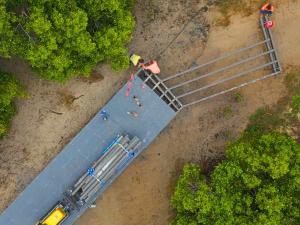
Pictured – Beree Badalla Boardwalk replacement for City of Gold Coast, Queensland.
Why FRP is the Future of Australian Infrastructure
Several factors are driving the growing adoption of FRP composites in Australia, ranging from environmental challenges to economic and design benefits.
“Australia’s diverse climate poses unique challenges for infrastructure durability particularly in coastal regions, which are subject to high levels of saltwater exposure, intense UV radiation, and extreme humidity,” Ryan Leeson said.
“All these factors accelerate the degradation of traditional materials like steel, which corrodes and concrete, which cracks and spalls,” Mr Leeson said.
“FRP’s resistance to corrosion and environmental stressors makes it an ideal choice for projects in such settings; and unlike steel, FRP does not rust or corrode, even in marine environments and its ability to withstand UV exposure without significant degradation further adds to its suitability for Australia’s harsh conditions,” he said.
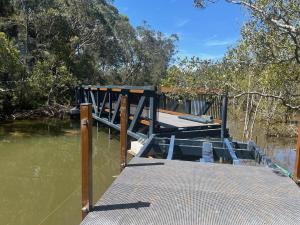
Pictured – FRP was chosen for Kangaroo Point and Brooklyn Boardwalk for Hornsby Shire Council in NSW as it won’t rot, rust or corrode in highly corrosive mangrove forest.
Australia’s commitment to sustainability has also never been stronger, with initiatives such as the Net Zero by 2050 plan emphasizing the need for greener construction practices.
“Traditional materials often come with significant carbon footprints, both during production and over their life cycle due to maintenance and repairs,” Ryan Leeson said.
“FRP composites, on the other hand, are a more sustainable option because they require less energy to manufacture, and their durability reduces the need for ongoing maintenance and frequent replacements,” Mr Leeson said.
“Often structures built from traditional materials can be replaced 2 or 3 times compared to an FRP structure and that all comes at a cost to the environment and the bottom line of the infrastructure Asset Owners,” he said.
Get your copy of Wagners CFT’s Environmental Product Declaration (EPD) which is third party reviewed and internationally recognised – Environmental Product Declaration (EPD)
Watch a webinar on ‘How to Reduce Embodied Carbon in Construction with Wagners FRP and Meet your 2030 Targets’
While the upfront costs of FRP may be higher than those of traditional materials, its long-term benefits make it a cost-effective choice.
“In addition to the benefits of FRP’s durability to the environment, FRP also translates into lower maintenance costs, fewer repairs, and extended lifespans for infrastructure projects. For instance, bridges constructed with FRP components require significantly less upkeep, saving hundreds of thousands of dollars over their lifetime,” Ryan Leeson said.
“This economic advantage is particularly appealing in countries like Australia, where remote and regional infrastructure can be costly to maintain,” Mr Leeson said.
“Using FRP can reduce the frequency of site visits and repairs, making it a financially sound investment; and this in turn is helping drive interest and uptake,” he said.
Read this webpage on Total Cost of Ownership
One of FRP’s standout properties is its exceptional strength-to-weight ratio.
“FRP can match or even exceed the strength of steel while being significantly lighter which means reduced transportation costs, smaller numbers of skilled workers during installation and less requirement for heavy equipment,” Ryan Leeson said.
“In projects where weight is a critical factor, such as high-rise buildings, marine structures, or long-span bridges, FRP’s lightweight nature can also reduce the structural load on foundations, leading to additional cost savings,” Mr Leeson said.
“FRP’s versatility enables engineers and architects to create designs that would be difficult or impossible with traditional materials,” he said.
“In Australia, where infrastructure projects often strive to balance functionality with aesthetics, FRP offers an opportunity to achieve both. From sleek pedestrian bridges to visually striking building facades, the material’s adaptability makes it a valuable tool for creative professionals.”
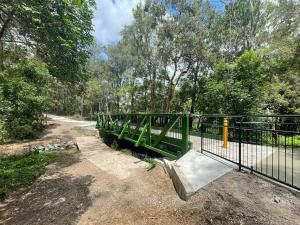
Pictured – This 17m truss bridge over Dobson Creek in Caboolture, Queensland was pre-fabricated off site and craned into position to reduce costs associated with installation and down-time the popular community footpath.
Application of FRP in Australian Projects
The potential uses of FRP in Australian infrastructure are vast; but there are some key areas where it is making a real impact.
“From seawalls to piers and offshore platforms, marine structures are constantly exposed to harsh conditions,” Ryan Leeson said.
“FRP’s ability to withstand saltwater and UV exposure without deterioration makes it an ideal material for such projects,” Mr Leeson said.
Read the news story ‘Historic Jetty Receives Modern Makeover on the Back of Timber Shortages’
Watch the webinar ‘Designing and Building Sustainable Marine Infrastructure’ featuring guest speaker John Leman from International Marine Consultants
“FRP is being increasingly used in bridge construction, particularly for decks, beams, and reinforcement,” Ryan Leeson said.
“Its corrosion resistance makes it an excellent choice for coastal and marine bridges. Additionally, FRP’s lightweight properties simplify installation, reducing the time and labour costs associated with traditional bridge construction,” he said.
Read this article on ‘Innovative Bridge Engineering Heritage Repair: Birkenhead GFRP Bridgedeck System’
“Chemical plants, wastewater treatment facilities, and other industrial environments often involve exposure to corrosive chemicals,” Ryan Leeson said.
“FRP’s chemical resistance and non-conductive properties make it a reliable choice for equipment, storage tanks, and structural components in these settings,” Mr Leeson said.
Read this Water Industry brochure for more details on what Wagners CFT offer in this space
“And as Australia ramps up its investment in renewable energy, FRP is finding applications in wind turbine blades, solar panel supports, and other components,” he said.
“Its lightweight nature and durability are particularly beneficial for renewable energy infrastructure, where efficiency and longevity are critical.”
Despite its many advantages, the adoption of FRP is not without challenges.
“One key hurdle is the higher initial cost, which can deter decision-makers unfamiliar with its long-term benefits,” Ryan Leeson said.
“Educating stakeholders about the lifecycle savings and reduced maintenance requirements is essential to overcoming this barrier,” Mr Leeson said.
“Another consideration is the need for specialized expertise in design and installation,” he said.
“While FRP’s properties offer incredible potential, leveraging them effectively requires a thorough understanding of the material’s behaviour and capabilities and investment in training and knowledge-sharing will be crucial for widespread adoption.”
Read this webpage about the Total Cost of Ownership, featuring a Case Study on the Cattana Wetlands Boardwalk Project
Watch this webinar on ‘What is the Total Cost of Ownership of Community Assets and the Benefits to your bottom line with FRP’ featuring Whitsunday REgional Council, Manager of Capital Programs, Michael Downing.
Looking Ahead: The Future of FRP in Australia
As we move into 2025, the case for FRP in Australian infrastructure becomes increasingly compelling.
“With its combination of durability, sustainability, cost efficiency, and design flexibility, it addresses many of the challenges facing the construction industry today,” Ryan Leeson said.
“Government initiatives and industry leaders are already beginning to recognize the potential of FRP, and as awareness grows, so too will its adoption,” Mr Leeson said.
“Pilot projects showcasing the material’s advantages will play a key role in demonstrating its value and building confidence among stakeholders,” he said.
“In the coming years, we can expect to see FRP used not only in large-scale infrastructure but also more extensively in smaller, community-focused projects.”
To explore some of the projects completed by Wagners CFT around the globe visit our Projects Page
“Fibre-Reinforced Polymer (FRP) composites represent a transformative opportunity for Australia’s construction and engineering sectors; and by addressing environmental, economic, and design challenges, FRP aligns perfectly with the nation’s goals for sustainable and resilient infrastructure.
“As we look to 2025 and beyond, this innovative material is set to redefine how Australia builds for the future.
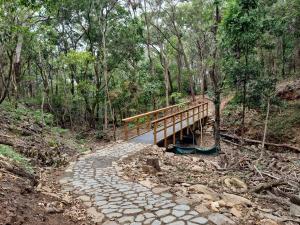
Pictured – Wagners FRP pedestrian bridge on Wangetti Trail in far north Queensland.
